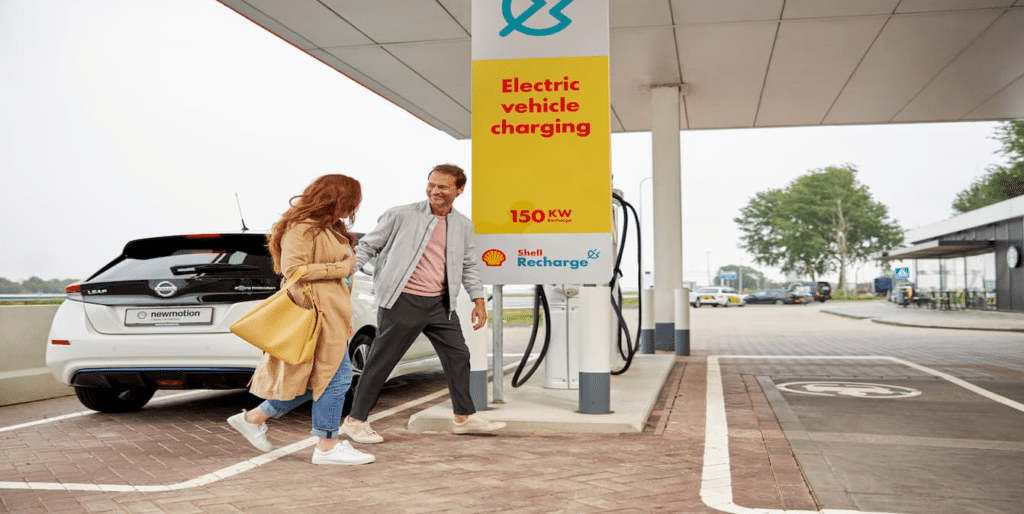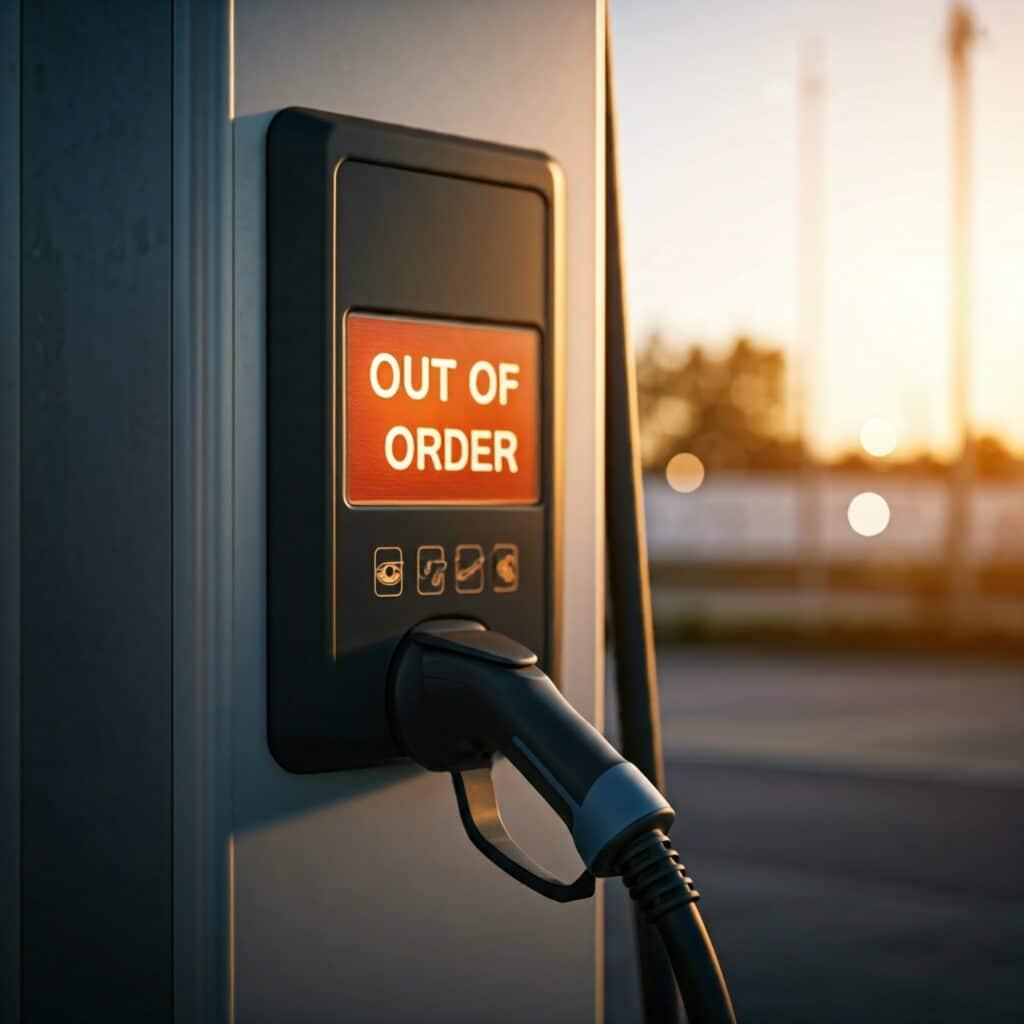80% of US EV Drivers Say Public Charging Reliability Has Improved
Shell’s newly released 2025 Recharge Driver Survey paints a nuanced picture of the global electric vehicle (EV) transition. Published on June 17, 2025, the report—based on interviews with 15,000 respondents across Europe, the U.S., China, and other key global markets—reveals a notable rise in EV owner confidence. Yet it also underscores deep-seated hesitancy among traditional internal combustion engine (ICE) drivers, driven primarily by cost and perceived shortcomings in public charging networks.
One statistic stood out, that 80% of respondents said that EV charging reliability in the US improved in the last twelve months. Innovative US-based companies Paren, Chargerhelp! and WattsUp are solving the charging reliability problem.
The 2025 Shell Recharge Driver Survey was conducted in March 2025 in collaboration with research partner Strive, drawing from 15,000 respondents across Europe, the U.S., China, and other key global EV and ICE markets.
Rising Confidence Among Existing EV Drivers
Current EV owners report feeling more assured about driving electric than they did a year ago. Six in ten (61%) EV drivers globally say they worry less about running out of charge, a promising sign that “range anxiety” is slowly fading. Nearly three-quarters (72%) also say public charging options and availability have improved—a clear vote of confidence for investments in global infrastructure.
And more EV owners are going all-electric at home, too. The number of EV drivers who no longer feel the need to keep a petrol or diesel vehicle as a backup is up across all major markets. In the U.S., single-vehicle EV households increased from 34% to 41%, Europe rose from 49% to 54%, and China surged from 72% to 89%.

ICE Drivers’ Reluctance
Despite these encouraging trends among current EV owners, the survey also revealed declining interest in EVs among those who haven’t yet made the switch. In the U.S., only 31% of ICE drivers say they’re interested in going electric—a slight dip from 34% in 2024. European figures reveal an even starker drop, from 48% to 41%. These statistics highlight persistent barriers preventing traditional ICE drivers from embracing electric mobility.
Cost is chief among these barriers. Even as battery prices decrease, vehicle prices have stagnated, especially across Europe. The International Energy Agency’s (IEA) 2025 Global EV Outlook also noted this trend. Shell’s survey found that 43% of European ICE drivers cite affordability as their primary concern. Given the broader economic backdrop of high energy prices and consumer caution, it’s hardly surprising that sticker shock continues to hold back adoption rates.
Support for Policies and Charging Infrastructure
There is still substantial backing for EV policies that aim to phase out traditional fuel-powered cars, but that support comes with caveats. Among ICE drivers who support phasing out petrol and diesel cars, 44% in Europe and 46% in the U.S. say they do so. However, only 56% of these drivers would maintain support if EVs remain more expensive than traditional vehicles. Even fewer—50%—would back these policies if charging infrastructure doesn’t improve.
Shell’s David Bunch, Group Executive Vice President of Mobility & Convenience, emphasized this “growing disparity,” stating that while EV owners are becoming more enthusiastic, broader economic pressures mean new customers face serious hurdles. “With the right policies and industry collaboration,” Bunch said, “we can make the transition affordable for consumers and attractive for investors. But more must be done to ensure no one is left behind in the shift to cleaner transport.”
Diverging Experiences With Charging Infrastructure Reliability and Value
The report also underscores regional disparities in public charging networks. In Europe, only 51% of EV drivers say public charger reliability has improved over the last year—a figure dwarfed by 74% in China and 80% in the U.S. Concerns about value for money also stand out: only 17% of European drivers say they believe public charging offers good value, compared to 69% of Chinese and 71% of U.S. respondents.
In the US, the reliability problem has plagued EV adoption for many years. In Paren’s December 2024 article, the company revealed that improvement in charger reliability rose to 85.5% in the Paren Reliability Index. However, reliability remains a problem that needs to be solved to improve EV adoption in the US. Chargerhelp! and WattsUp are bold companies tackling this problem.
This difference highlights the critical need for Europe to catch up. Even as EV adoption continues to grow, the region’s slow progress on infrastructure is a major pain point. It also reinforces the need for partnerships between energy companies, automakers, and governments to improve both access and the cost profile of public EV charging.

Focus on Convenience Retail
Beyond the nuts and bolts of cars and charging, the survey explores the experience of drivers off the road too. A strong majority of EV drivers (75%) and non-EV drivers (80%) shop for retail items at fuel stations at least once a month. Four in ten drivers say they enjoy at least one cup of coffee a month at these venues, with six in ten saying they’d only buy it if they thought it was good quality. Bunch added that this insight validates Shell’s focus on making forecourts more welcoming and appealing to customers with offerings like Shell Café.
ChargerHelp, Driving EV Charging Repair and Maintenance
ChargerHelp! is an innovative company dedicated to keeping EV charging networks running smoothly by specializing in on-demand repair and maintenance services. With a focus on reducing charger downtime and ensuring a seamless driver experience, ChargerHelp! deploys a trained workforce equipped to quickly troubleshoot and repair station faults in the field. By leveraging real-time diagnostics, rigorous technician training, and a commitment to rapid response, ChargerHelp! plays a key role in boosting public charger reliability and operator uptime—essential ingredients for accelerating EV adoption across all communities.
WattsUp, Addressing EV Charger Reliability
WattsUp is an AI-powered platform dedicated to enhancing EV charger reliability through proactive, data-driven solutions. By leveraging real-time monitoring and machine learning, it detects anomalies, predicts failures before they occur, and automates diagnostics—minimizing downtime and the need for manual intervention . It goes beyond detection by automatically ordering required parts and synchronizing technician schedules precisely when maintenance is needed. Designed for charger manufacturers, site operators, and property owners, WattsUp delivers honest insights into charger health and streamlines operations with AI-enabled maintenance workflows. With a founding team whose combined 25 years of experience in EV charging and hardware engineering underscores its credibility, WattsUp is poised at the forefront of ensuring EV infrastructure stays operational and dependable.
Paren is Improving EV Charging Reliability
Paren is a San Francisco–based EV charging data analytics company born from the pioneering EVSession project led by co‑founder Bill Ferro . Paren aggregates and enriches expansive datasets on charger reliability, availability, pricing, utilization, and health—offering stakeholders—from automakers and map providers to charge‑point operators and maintenance teams—real‑time insights into the performance and trustworthiness of charging infrastructure. Its inaugural “State of the Industry” report for Q1 2025 highlighted notable improvements: a reliability index rise to 82.6, the emergence of Charging “2.0,” and growth in charger ports and station scale. Loren McDonald, EVAdoption’s founder and a trusted industry expert, joined the Paren executive team as Chief Evangelist, further strengthening its position as the go-to source for EV charging insights. Backed by $3 million in seed funding, Paren aims to empower smarter infrastructure investments and operational efficiencies—helping accelerate EV adoption with transparency and data‑driven decision making.
Shell is Focused on Sustainability
With 75,000 Shell public charge points worldwide and a commitment to reimagine the forecourt experience, the company is clearly focused on the future. However, its 2025 survey reveals that making EVs mainstream requires more than just expanding infrastructure—it requires making the cars affordable, ensuring top-notch public charging experiences, and helping ease the transition for hesitant ICE drivers.
As Bunch put it, “More must be done to stimulate demand and ensure no one is left behind.” Until then, it’s too early to pull the plug on support for those who need an extra nudge toward electric mobility.
EVinfo.net’s Take
The one negative statistic for American EV adoption in Shell’s survey is easily explained. Shell’s research found appetite for EVs among ICE drivers is declining. In the US in 2025, the interest to switch to EV is marginally lower, (31% in 2025 versus 34% in 2024). This is not due to the facts that EVs are the most eco-friendly and cost-effective form of transportation currently available. The decline is mostly due to the vast anti-EV misinformation and disinformation that continues to circulate.
As more drivers see through this, more and more they are switching to EVs. EVinfo.net believes the fast-moving, exciting EV revolution in America will continue growing, although it has hit speed bumps on the road to mass adoption.
No doubt, there will be sales growth slowdowns and speed-ups to come, just like every other product sold around the world. But the bottom line is that because EV technology is far superior to ICE, EVs will keep growing. ICE still made up the majority of new vehicle sales in 2024, but declined to 79.8%, falling under 80% for the first time in modern automotive history.
EVinfo.net urges you to support Paren, ChargerHelp! and WattsUp, all fantastic, forward-thinking companies, making the world a better place.

Electric Vehicle Marketing Consultant, Writer and Editor. Publisher EVinfo.net.
Services